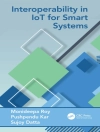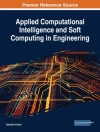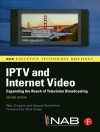Learn about Ultra-wideband (UWB) transmission – the most talked
about application in wireless communications.
UWB wireless communication is a revolutionary technology for
transmitting large amounts of digital data over a wide spectrum of
frequency bands with very low power for a short distance. This
exciting new text covers the fundamental aspects of UWB wireless
communications systems for short-range communications. It also
focuses on more advanced information about networks and
applications. Chapters include: Radio Propagation and Large Scale
Variations, Pulse Propagation and Channel Modelling, MIMO (Multiple
Input, Multiple Output) RF Subsystems and Ad Hoc Networks.
* Focuses on UWB wireless communications rather than UWB radar,
which has been covered before.
* Provides long and short-term academic and technological
value.
* Teaches readers the fundamentals, challenges and up-to-date
technical processes in this field.
Table des matières
List of Contributors.
Preface.
1 Introduction (Robert Caiming Qiu, Xuemin (Sherman) Shen, Mohsen Guizani and Tho Le-Ngoc).
1.1 Fundamentals.
1.2 Issues Unique to UWB.
1.3 Emerging Technologies.
References.
2 Modulation and Signal Detection in UWB (Uzoma A. Onunkwo and Ye (Geoffrey) Li).
2.1 Overview.
2.2 Single-Carrier-Based Modulation.
2.3 OFDM-Based Modulation.
2.4 Conclusion and Further Reading.
References.
3 UWB Pulse Propagation and Detection (Robert Caiming Qiu).
3.1 Introduction.
3.2 UWB Pulse Propagation.
3.3 UWB Pulse Signal Detection.
References.
4 Timing Synchronization for UWB Impulse Radios (Zhi Tian and Georgios B. Giannakis).
4.1 Introduction.
4.2 Signal Model.
4.3 Signal Detection and Symbol-Level Acquisition.
4.4 SAT and MAT: Templates with and without Timing.
4.5 Coarse Synchronization Using Symbol-Rate Samples.
4.6 Synchronization with Flexible Timing Resolution.
4.7 Timing Acquisition for Ad Hoc Multiple Access.
4.8 Demodulation and BER Sensitivity to Mistiming.
4.9 Concluding Summary.
References.
5 Error Performance of Pulsed Ultrawideband Systems in Indoor Environments (Huaping Liu).
5.1 Introduction.
5.2 System Model.
5.3 Error Performance in Indoor Environments.
References.
6 Mixed-Signal Ultrawideband Communications Receivers (Sebastian Hoyos and Brian M. Sadler).
6.1 Introduction.
6.2 Analog-to-Digital Conversion via Signal Expansion.
6.3 Mixed-Signal Communication Receivers Based on A/D Conversion via Signal Expansion.
6.4 Analog-to-Digital Conversion in the Frequency Domain.
6.5 Frequency-Domain Mixed-Signal Receivers.
6.6 Conclusions.
References.
7 Trends in Ultrawideband Transceiver Design (Zhengyuan Xu).
7.1 Introduction.
7.2 Status of UWB Transceiver Design.
7.3 Digital UWB Receivers.
7.4 Analog/Digital UWB Transceivers.
7.5 Conclusions.
Acknowledgments.
References.
8 UWB MAC and Ad Hoc Networks ( Zihua Guo and Richard Yao).
8.1 Introduction.
8.2 Qo S Scheduling in PNC.
8.3 Power Management in IEEE 802.15.3.
8.4 Adaptive Dly-ACK.
8.5 Ad Hoc Networks.
8.6 Summary.
References.
9 Radio Resource Management for Ultra-Wideband Communications (Xuemin (Sherman) Shen, Weihua Zhuang, Hai Jiang and Jun Cai).
9.1 Introduction.
9.2 Radio Resource Management.
9.3 Multiple Access.
9.4 Overhead Reduction.
9.5 Power/Rate Allocation.
9.6 Conclusions.
References.
10 Pulsed UWB Interference to Narrowband Receivers (Jay E. Padgett).
10.1 Introduction.
10.2 Pulsed UWB Signal Model.
10.3 Narrowband Receiver Model.
10.4 Equivalent Receiver Model and Response to a Pulse.
10.5 Response to a Pulse Sequence.
10.6 Simulating the Response to a Pulse Sequence.
10.7 General Properties of the IF Output.
10.8 Power Spectral Density.
10.9 Discrete PDF PSD Example: Equally Spaced, Equally Likely Time Offsets .
10.10 Continuous PDF PSD Examples.
10.11 Comparison of PSD and Simulation Results.
10.12 Statistical Properties of the Output Envelope.
10.13 Summary.
References.
11 Digital-Carrier Spreading Codes for Baseband UWB Multiaccess (Liuqing Yang and Georgios B. Giannakis).
11.1 Introduction.
11.2 Digital-Carrier Multiband User Codes.
11.3 Low Duty-Cycle Access in the Presence of NBI.
11.4 Improved Rate Access in the Presence of Multipath.
11.5 Multiuser Interference Mitigation.
11.6 Summary.
References.
12 Localization ( Kegen Yu, Harri Saarnisaari, Jean-Philippe Montillet, Alberto Rabbachin, Ian Oppermann and Giuseppe Thadeu Freitas de Abreu).
12.1 Introduction.
12.2 Time-of-Arrival Estimation.
12.3 Location and Tracking.
12.4 Location in Distributed Architectures.
12.5 Theoretical Positioning Accuracy.
12.6 Conclusions.
Acknowledgment.
References.
Index.
A propos de l’auteur
Professor Xuemin Shen works in the Department of Electrical
and Computer Engineering at the University of Waterloo, Canada. His
research interests are Wireless/Internet interworking, Resource and
mobility management, Voice over mobile IP, Wi Fi, WAP, Bluetooth,
UWB wireless applications, ad hoc wireless networks.
Dr. Mohsen Guizani is Professor and Chair of the
Department of Computer Science at Western Michigan university. Dr.
Guizani’s research interests include Computer Networks, Wireless
Communications and Computing, Design and Analysis of Computer
Systems, and Optical Networking. He is the founder and
Editor-In-Chief of Wireless Communications and Mobile Computing
Journal, published by John Wiley.
Professor Robert Caiming works in the Center for
Manufacturing Research/Electrical and Computer Engineering
Department at Tennessee Technological University, USA. His research
interests include Wireless communications and systems (3G, 4G,
UWB), Radar/communications signal processing and Time-domain
Electromagnetics.
Professor Tho Le-Ngoc works in the Department of
Electrical and Computer Engineering at Mc Gill University. His
research interests include Broadband Communications: Advanced
Transmission, Multiple-Access and Dynamic Capacity Allocation
Techniques.












